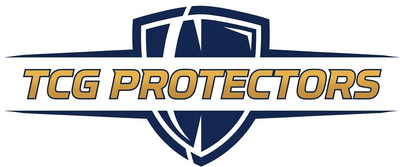Combat is the heart of most Magic: The Gathering games—it's the phase where strategies clash, creatures are tested, and life totals dwindle. Players quickly learn the rhythm of declaring attackers and blockers, but the true complexity of MTG combat lies in its final, decisive moment: the combat damage step.
This isn't just a simple accounting of numbers. It's a distinct step in the turn with its own unique rules and surprising strategic depth. It's where keywords like first strike, deathtouch, and trample warp the very fabric of the rules, creating intricate puzzles that can decide the outcome of a game. Many players have a functional understanding of this step—enough to know that a 3/3 creature kills a 2/2. But to truly master MTG combat rules, you must grasp the precise sequence of events when damage is assigned and dealt.
A deep knowledge of the combat damage step lets you spot non-obvious lethal attacks, save your creatures in complex multi-blocker situations, and leverage keyword abilities to their fullest potential. It's the key to unlocking the next level of Magic: The Gathering combat mastery.
This guide dissects this crucial moment in the game. We'll explore how the game creates separate damage steps for keywords like first strike, demystify damage assignment rules, and provide a definitive explanation of powerful, often misunderstood interactions—like trample and deathtouch. For more on how these fit into broader MTG triggers, check our beginner's guide.
More Than One Step: The Impact of First Strike and Double Strike

The first thing to understand is that the combat damage step isn't always a single event. Certain keyword abilities create additional, preliminary damage steps in the MTG combat phase. These interactions often tie into the game's stack mechanics, where timing and priority can amplify their effects.
The First Strike Combat Damage Step
If any attacking or blocking creature has first strike or double strike, the game creates a special combat damage step before the regular one.
- In this step, only creatures with first strike and double strike assign and deal their combat damage.
- After damage is dealt, state-based actions are checked. Any creature dealt lethal damage is destroyed and removed from combat.
- Players then receive priority and can cast instants or activate abilities.
The Regular Combat Damage Step
After the first strike step concludes, the game proceeds to the regular combat damage step.
- Now, surviving creatures with double strike (dealing damage in both steps) and any without first strike assign and deal their combat damage.
- Again, state-based actions are checked, creatures dealt lethal damage are destroyed, and players receive priority.
This sequence is the source of first strike rules' power. A 2/2 with first strike can attack into a 3/3 without it. In the first strike damage step, the 2/2 deals 2 damage to the 3/3. The 3/3 takes the hit but doesn't deal back yet. Before the regular step begins, state-based actions could destroy the 3/3 if lethal—turning a potential trade into a one-sided win. If blocked by a 2/2 without first strike, your attacker deals lethal damage first, destroying the blocker before it retaliates.
The Art of Assignment: Damage in Multi-Blocker Scenarios

When an attacker faces multiple blockers, the attacking player makes a crucial decision during the declare blockers step, before damage is dealt. You must announce a damage assignment order for the blockers—locking it in for the combat damage step.
For example, you attack with a 6/6. Your opponent blocks with a 2/2 and a 5/5. You choose the order: 2/2 first, then 5/5 (or vice versa).
In the combat damage step, assign damage per this order. You must assign at least lethal damage to the first creature before any to the next.
Continuing the example: 2/2 first, 5/5 second.
- Assign at least 2 damage to the 2/2 (lethal).
- With 4 damage left, assign it to the 5/5.
Outcome: Your 6/6 deals 2 to the 2/2 (destroyed) and 4 to the 5/5 (survives with marks). Blockers deal 7 total back, destroying your 6/6.
Mastering multi-blocker damage assignment in MTG combat rules lets you minimize losses or maximize trades—flipping defenses against you. These tactics shine in various Magic: The Gathering formats, where combat plays a central role.
The Power Couple: Trample and Deathtouch Explained

This is where MTG combat gets really interesting. The trample and deathtouch interaction is one of the most powerful—and frequently misunderstood—rules in the game.
Trample: Allows an attacking creature to deal excess combat damage to the defending player or planeswalker. Assign lethal to blockers; the rest "tramples over."
Deathtouch: Makes any damage from that source lethal—even 1 point.
Combined: Attack with a 6/6 having both trample and deathtouch, blocked by a 5/5.
Damage Assignment: Assign lethal to the blocker first.
- With deathtouch, 1 damage is lethal.
- Assign 1 to the 5/5 (destroyed). Trample the remaining 5 to the player.
Resolution: 1 to blocker (dead), 5 to opponent. This trample deathtouch combo lets big creatures ignore huge blockers, dealing nearly full damage directly—a game-changer in aggressive decks. Pro tip: Pair it with special actions for unblockable surprises.
Strategic Implications: Winning in the Margins

Grasping these MTG combat damage nuances reveals plays invisible to novices.
Leveraging First Strike
Cast an instant granting first strike in declare blockers. Turn a trade into your creature's solo survival.
Manipulating Damage Assignment
If you can give a blocker protection or indestructible, wait for their order. Protect the first in line—your attacker dumps all damage there, sparing others.
The "Sacrifice Outlet" Trick
Post-damage but pre-state-based actions, you get priority. Sacrifice a dying 3/3 for value—its ability resolves before destruction.
These first strike rules and damage assignment tactics exploit timing for edges in tight games. Building decks around them? Our 2025 MTG deck guide has starter recommendations.
Conclusion: The Final Calculation
The combat damage step is the climax of the MTG combat phase—a flurry of calculations, keyword interactions, and precise timing where plans from earlier steps pay off. By internalizing this detailed sequence, you navigate even the most tangled Magic: The Gathering combat scenarios.
You'll spot the hidden power in trample and deathtouch, time instants for first strike perfectly, and order damage assignment advantageously. In a game decided by narrow margins, mastering the combat damage step wins countless matches. Dive deeper into MTG combat rules and elevate your play today. And don't forget to protect those hard-earned cards with our 5-layer TCG protection guide.














Leave a comment